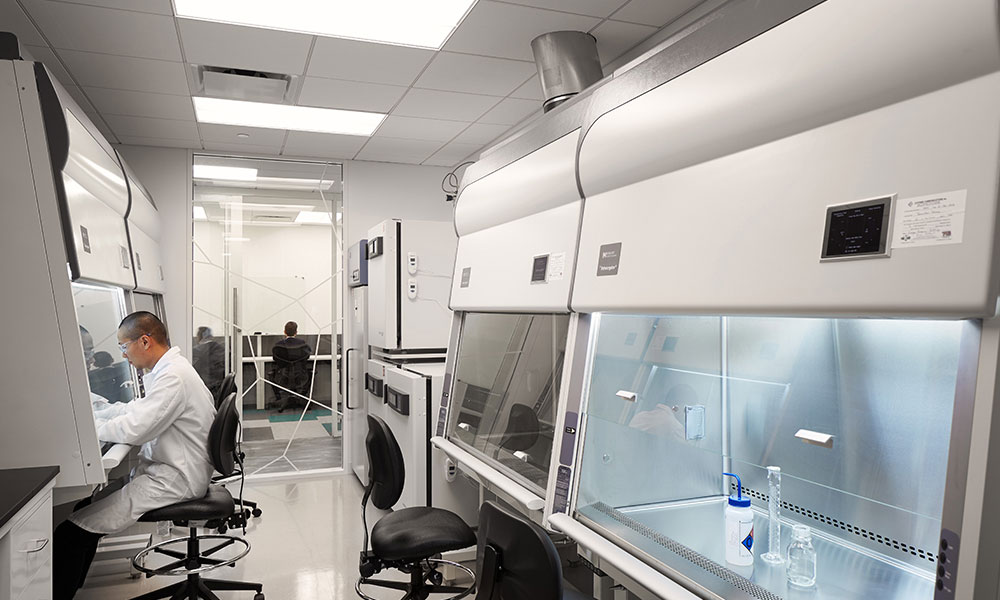Laboratory Design for Biosafety Levels 1, 2 & 3
Biosafety laboratories are specialized research laboratories dealing with infectious agents and pathogens. Research involving infectious & genetically modified organisms requires the protection of the laboratory personnel, environment, and the community.
Biosafety levels provide protective measures and command the work practices appropriate to the research. Biosafety levels are shields intended to secure research facility, faculty, surrounding climate and community.
FACTORS DETERMINING BIOSAFETY LEVELS
Biosafety lab levels are determined by these key factors:
- Design features & procedures
- Severity of infection & transmissibility
- Nature of the work conducted
- Route of exposure & origin of microbe.
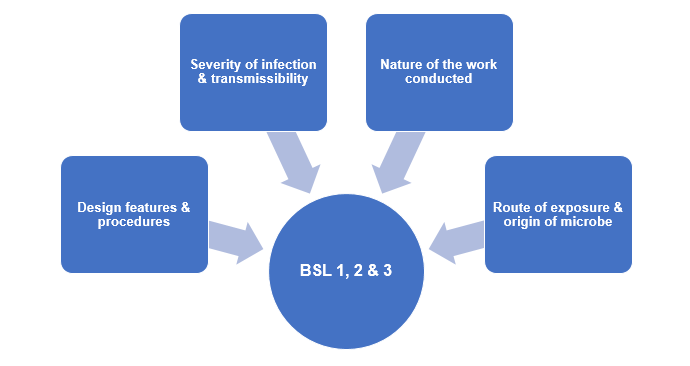
BSL-1: BASIC LAB
It is the lowest level of biosafety level dealing with the lab settings in which personnel work with low infectious microbes that pose no serious threat.
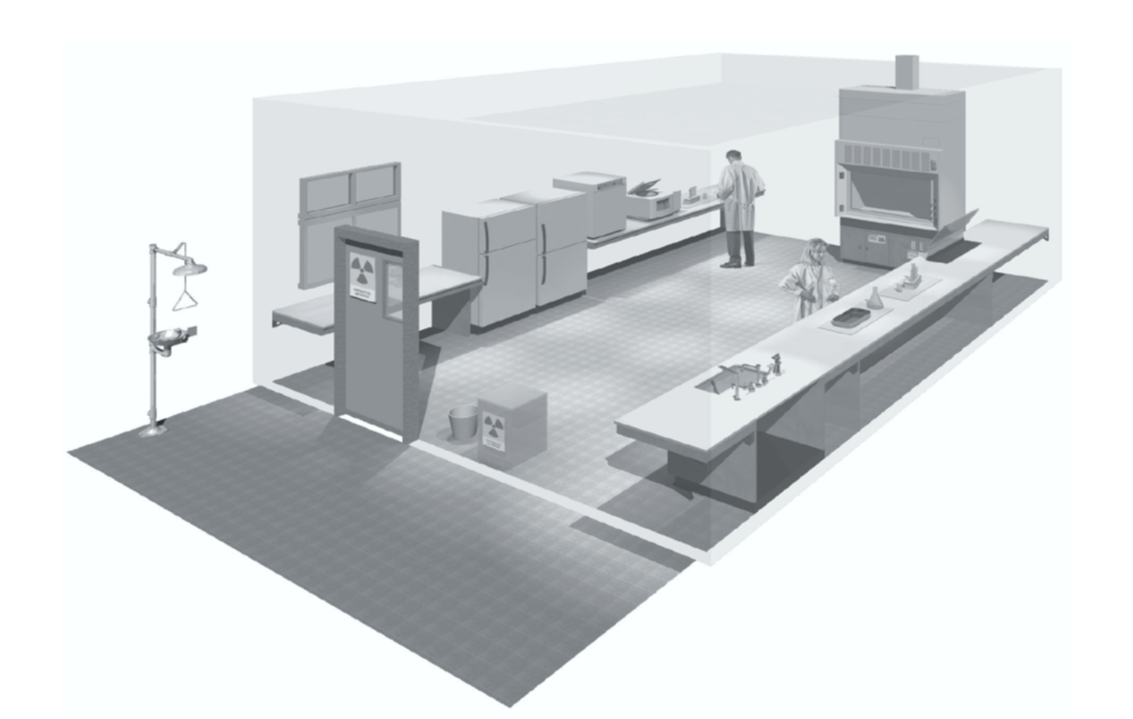
Design Requirements:
- Mostly the work is led on the open bench using general microbiological practices.
- No special feature or design is required in this level and has normal construction, i.e., not separated from other lab sections.
- Only mechanical pipetting – no mouth pipetting is allowed.
- Daily decontamination of all work surfaces when work is complete.
- Personal protective equipment, i.e., eye protection, gloves, and a lab coat, is necessary.
BSL-2: BASIC LAB + AEROSOL CONFINEMENT SAFETY CABINET
It is the second biosafety level dealing with the infectious agents that pose moderate health risk & diseases. These labs are also not separated from other lab sections. Outside personnel access to these labs are limited while experiment is going on.
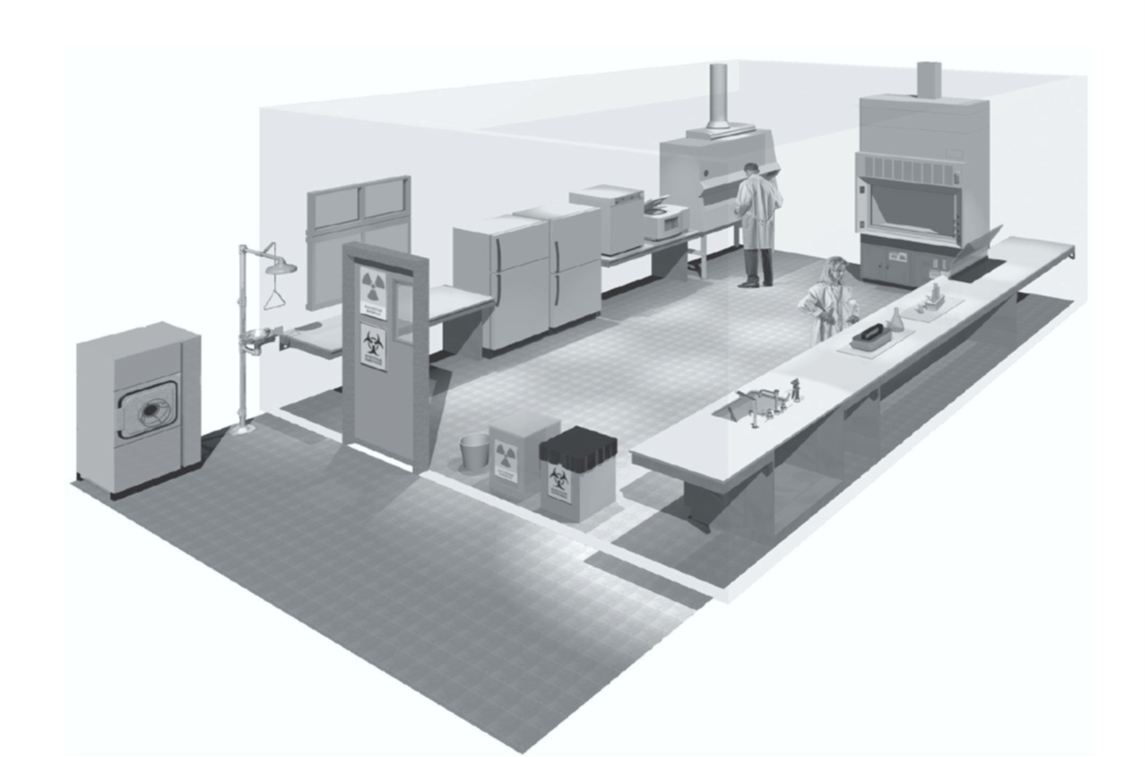
Design Requirements:
Include all designs or features of BSL-1, plus:
- Biohazard sign posted on the door and extreme precautions are taken with the contaminated items.
- Most work is performed on the sterilized bench tops but the processes that form aerosols are handled in biosafety cabinet.
- A sink and eyewash must be readily available.
- Contaminated broken glass or pipettes must be disposed of in puncture-resistant container that must be labelled to warn everyone that the contents are hazardous.
- The lab must have self-closing or lockable doors.
BSL-3: CONTAINMENT LABORATORY
It is the level where work is performed with agents that may influence the personnel with extremely deadly sickness through inward breath or aerosol development and may even contaminate the surrounding environment. All the experiments must be conducted in a biosafety cabinet and only individuals with specific training are allowed to enter these labs with their supervisors.
Design Requirements:
Include all designs or features of BSL-1 and BSL-2, plus:
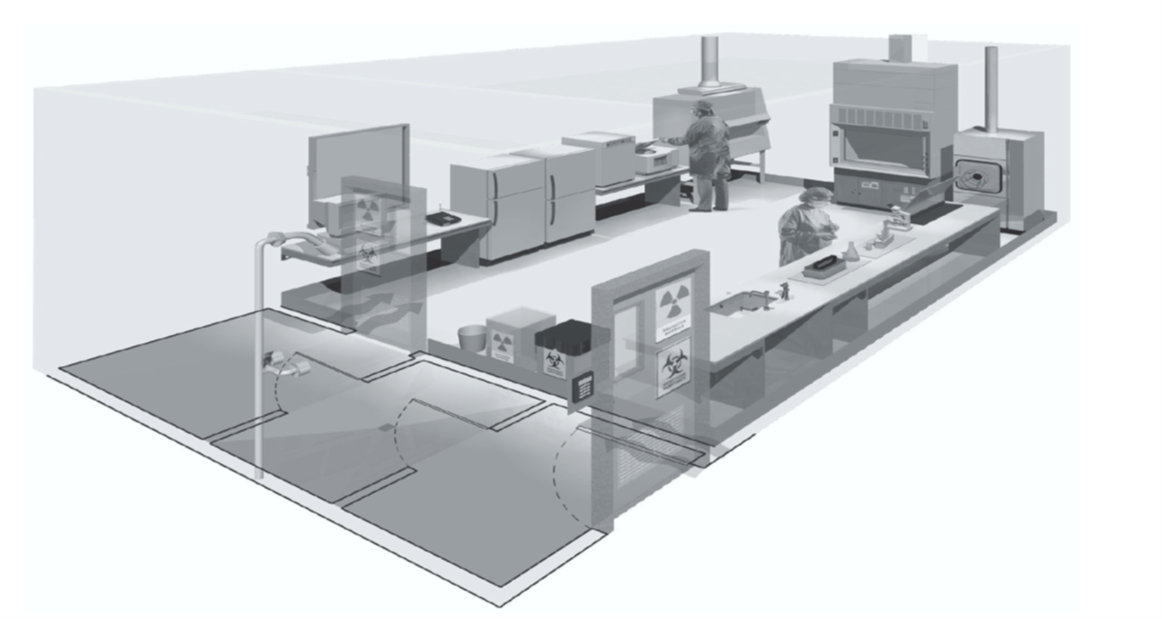
- Facility design should incorporate self-closing double-door entry access isolated from general passages.
- Must include exhaust air being HEPA (high efficiency particulate air) filtered and proper procedures for biomedical waste disposal.
- The ventilation should give directional wind current by bringing air into the lab from clean zones and with no recirculation.
PRECAUTIONS FOR ALL BIOSAFETY LEVELS:
- Gloves, safety glasses, gowns or uniforms should be worn in labs. After experiment, personnel should remove them and must wash their hands with soap before they leave the laboratory area.
- Eating, drinking, smoking, dealing with cosmetics and contact lenses is prevented in the laboratory area.
- All spills, mishaps or openings to infectious chemicals must be accounted for to the lab supervisor. A put down account of such mishaps ought to be kept up.
- Work surfaces should be cleaned/decontaminated after any spill of possibly dangerous material and at the end of the functioning day.
Comments are closed.

